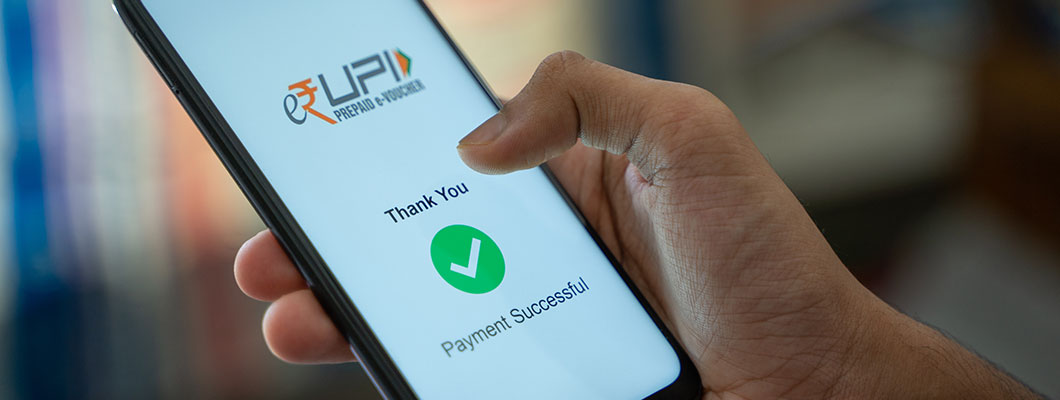
UPI vs NEFT – What’s best for you?
Posted on Thursday, November 24th, 2022 | By IndusInd Bank
As technology continues to evolve, we’re more reliant on digital means than ever. The onset of digital revolution in India began with the ‘Digital India’ programme, launched in July 2015. With an aim to transform India into a digitally-enabled economy, the programme focused on making technology accessible and affordable for each and every citizen of the country.
Under this programme, on April 11, 2016, the National Payments Corporation of India (NPCI) launched the Unified Payments Interface (UPI) system. With an aim to enable seamless and faster financial transactions for all, UPI has emerged as the ambassador of financial revolution in the country. As the economy continues to recover from the effect of COVID-19 pandemic, UPI transactions have flourished. Nearly 6.28 billion UPI transactions worth Rs 10.63 trillion were recorded in July 2022 across 338 active Indian banks. Amazing, right?
As the popularity of UPI continues to grow at a faster pace than ever, older money transfer options like National Electronics Funds Transfer (NEFT) are having a hard time retaining users. Though NEFT has gone under significant improvements over the period of time, the convenience and ease of transacting via UPI still outweigh NEFT. However, there are some areas where NEFT excels.
Curious to know how UPI and NEFT differ from each other? Just sit tight and read through this article.
UPI vs NEFT — Detailed Comparision
| UPI | NEFT |
|---|---|
| A payment app that allows you to add multiple bank accounts and pay seamlessly | A Payment method that works with internet banking or mobile banking of a bank |
| Allows immediate money transfer with just a few taps | Money transfer via NEFT can take up to 24 hours |
| Money transfer is possible by just scanning a QR or entering the mobile number of the recipient | You need to add the bank details of the recipient to initiate a money transfer |
| You can collect as well as transfer money via UPI | NEFT allows only money transfer and collection is not possible |
| The daily transaction limit via UPI is capped at Rs. 1 lakh | There’s no limit on transaction amount through NEFT |
| There are no additional charges involved in UPI transactions | The bank levies a small charge on all NEFT money transfers |
| No need to add beneficiary for fund transfer | Beneficiary details need to be added before initiating fund transfer |
| There are numerous wallet and payment apps that support UPI payments and offer rewards for transacting | Some bank apps are too slow and do not offer any rewards on NEFT payments |
| UPI system works 24×7 and you can transact at any time, from anywhere | NEFT transactions work faster during the bank working hours |
Now, let’s learn how you can make your UPI ID and activate NEFT.
How to Create a UPI Account?
- Download the UPI app of your choice from Android Play store or Apple App store.
- Sign up using the mobile number registered with your bank.
- Link your bank account(s) by verifying the required details.
- A unique virtual ID will be created using your mobile number which can be shared to collect money directly into your bank account.
- You can also share your unique QR code with friends, family, or anyone to accept payments.
- Use the scan QR feature to pay at a store/shop or to any other recipient.
- You can also enter the recipient’s virtual ID or fetch the same by entering the recipient’s mobile number to transfer money.
- If you are a merchant or business owner then you can also use UPI as a mode for receiving business payments. Check out the IndusInd Bank Soundbox for more details.
Interesting Tip: A UPI transaction can be as small as Rs. 0.1
How to Transfer Funds via NEFT?
- Visit your bank branch to enable online banking facilities (if not activated already).
- Once activated, log in to internet banking or mobile banking.
- Under the ‘Fund Transfer’ tab, select NEFT option.
- Choose a beneficiary or add new beneficiary details, including Bank Account Number, Account Holder Name, and IFSC Code.
- Enter the amount you wish to transfer and click on ‘Submit’.
- Complete OTP verification to complete the transaction.
Interesting Tip: You will get a reference number upon completing the transaction. This becomes extremely useful while raising a dispute with the bank in case of delay or payment failure.
Summing up
Comparing UPI and NEFT side-by-side gives a clear view of why UPI system has an edge over NEFT. For most purposes, UPI transactions are quite convenient, easy, and quick. However, if you are transferring a big amount (>=Rs. 1 lakh), NEFT option is the one to go with.
Disclaimer: The information provided in this article is generic in nature and for informational purposes only. It is not a substitute for specific advice in your own circumstances. Hence, you are advised to consult your financial advisor before making any financial decision. IndusInd Bank Limited (IBL) does not influence the views of the author in any way. IBL and the author shall not be responsible for any direct/indirect loss or liability incurred by the reader for taking any financial decisions based on the contents and information.



 Offers
Offers Rates
Rates Debit Card Related
Debit Card Related Credit Card Related
Credit Card Related Manage Mandate(s)
Manage Mandate(s) Get Mini Statement
Get Mini Statement
 categories
categories Bloggers
Bloggers Blog collection
Blog collection Press Release
Press Release


